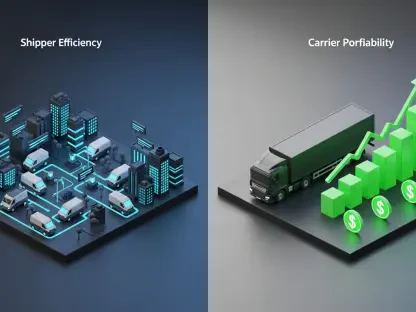In the ever-evolving landscape of talent acquisition, organizations face mounting pressure to identify candidates who not only fit the role but also drive long-term success, a challenge made increasingly complex by the limitations of conventional hiring methods that often fail to deliver accurate predictions. Traditional approaches, frequently rooted in subjective impressions and gut feelings, often fall short in predicting how well someone will perform on the job. This has sparked a significant shift toward data-driven hiring, a strategy that harnesses analytics and evidence to make informed, reliable decisions. By leveraging historical data, structured frameworks, and real-time metrics, companies are transforming recruitment into a science rather than an art. This article explores the mechanisms behind data-driven hiring, delving into how it can forecast job performance with greater accuracy. From identifying key competencies to balancing analytics with human insight, the focus is on innovative practices that are reshaping how talent is sourced and selected in today’s competitive market.
Uncovering the Shortcomings of Old-School Hiring
The foundation of many traditional hiring practices rests on quick judgments—whether it’s a firm handshake, a polished resume, or a confident demeanor during the first few minutes of an interview. However, these superficial indicators often lead to biased decisions that fail to reflect a candidate’s true potential for success. Studies from leading research firms like Deloitte reveal that such methods contribute to high rates of mis-hires, where individuals seem promising initially but struggle to meet expectations once in the role. The cost of these errors, both in terms of resources and morale, underscores the urgent need for a more dependable approach. Data-driven hiring emerges as a solution by prioritizing measurable outcomes over personal impressions, aiming to eliminate guesswork and reduce the risk of costly mistakes.
Beyond the issue of bias, traditional hiring often lacks a systematic way to evaluate long-term fit. Without concrete data to guide decisions, recruiters may overlook critical skills or attributes that align with organizational needs. This gap becomes especially problematic in fast-paced industries where adaptability and specific competencies are paramount. By contrast, a data-centric model offers a structured path to assess candidates based on evidence, such as past performance metrics or predictive analytics. This shift not only enhances the accuracy of hiring decisions but also helps build teams that are better equipped to handle evolving challenges. The move away from outdated practices is not just a trend—it’s a necessary evolution to meet the demands of a modern workforce.
Crafting Success Through Competency Blueprints
A pivotal element of data-driven hiring lies in the development of competency frameworks, which act as a roadmap for identifying the skills, behaviors, and traits essential for excelling in a specific position. These frameworks create a unified standard across an organization, enabling talent acquisition teams to evaluate candidates consistently and objectively. As highlighted by experts like Mark Linnville from Garner Health, defining these competencies ensures that hiring focuses on measurable qualities rather than vague or subjective impressions. This approach allows for the collection of actionable data, which can then be analyzed to uncover patterns that differentiate high performers from others, ultimately refining the recruitment process.
Implementing such a framework also fosters alignment between hiring strategies and broader business goals. When competencies are clearly defined, it becomes easier to pinpoint exactly what drives success in a given role, whether it’s technical expertise, problem-solving ability, or cultural fit. This clarity helps organizations avoid the pitfalls of generic hiring criteria that may not translate to on-the-job effectiveness. Moreover, a well-structured competency model supports ongoing improvement by providing a baseline for tracking the impact of new recruitment tactics. By focusing on data-backed attributes, companies can build a more capable workforce that is prepared to meet both current and future demands with precision and confidence.
Harnessing Early Feedback for Swift Adjustments
One of the standout advantages of data-driven hiring is the ability to tap into early performance indicators, offering insights long before traditional metrics like annual reviews come into play. Metrics such as “time to productivity” during the onboarding phase provide a rapid snapshot of how well a new hire is integrating and contributing. This immediate feedback loop allows organizations to assess the quality of their recruitment decisions in real time, making it possible to adjust strategies on the fly. Rather than waiting months to identify a poor fit, companies can address issues early, minimizing disruption and maximizing efficiency in the talent acquisition process.
Additionally, analyzing data from both successful hires and mis-hires offers a deeper understanding of what predicts long-term performance. By reverse-engineering success—studying the traits and behaviors of top employees—recruiters can refine their criteria and tools to better forecast outcomes. Similarly, examining past failures helps eliminate misleading indicators that might initially seem promising but ultimately fail to correlate with job success. This dual approach of leveraging early metrics and learning from historical data creates a dynamic hiring system that evolves with each cycle, ensuring that organizations remain agile in identifying and nurturing talent that truly delivers results.
Aligning Assessments with Job Realities
Generic hiring processes often fall short when it comes to evaluating candidates for the unique demands of a specific role, a challenge that data-driven hiring addresses through tailored assessments. Instead of relying on resumes or self-reported experiences, this strategy emphasizes simulations and exercises that mirror the actual challenges a candidate will encounter on the job. Such role-specific evaluations, endorsed by industry thought leaders, test critical skills like adaptability and problem-solving in realistic scenarios. This method provides a clearer picture of how someone might perform under real-world pressures, particularly in high-growth or rapidly changing environments.
The value of these customized assessments lies in their ability to reveal a candidate’s potential beyond what a traditional interview can uncover. For instance, placing individuals in unfamiliar situations during the evaluation process can highlight their capacity to learn quickly and think on their feet—qualities that are often crucial for success. This focus on practical, job-relevant testing moves hiring away from outdated proxies like years of experience and toward direct evidence of capability. As a result, organizations gain confidence that their selected candidates are not just qualified on paper, but genuinely equipped to excel in the specific context of the role, driving better performance outcomes.
Integrating Data with Human Perspective
While the power of analytics in hiring is undeniable, it’s equally important to recognize that data alone cannot capture every nuance of a candidate’s potential. Striking a balance between quantitative metrics and human judgment remains essential for a holistic recruitment process. Structured evaluation rubrics play a key role here, ensuring that all interviewers assess candidates using the same criteria, which helps minimize personal bias. This balanced approach, often described as the “sweet spot” by talent professionals, combines the precision of data with the depth of human observation to create a more reliable and fair hiring framework.
This integration also ensures that the hiring process retains a personal touch, acknowledging factors like cultural alignment or interpersonal dynamics that numbers might overlook. Data can guide decisions by highlighting trends and patterns, but human insight adds context, interpreting subtle cues or unique circumstances that analytics might miss. By grounding subjective assessments in evidence-based criteria, organizations can avoid the pitfalls of unchecked intuition while still valuing the expertise of their hiring teams. The result is a more cohesive strategy that leverages the strengths of both data and human judgment, ultimately leading to selections that are both accurate and equitable.
Focusing on Equity and Sustainable Outcomes
Data-driven hiring extends beyond merely predicting job performance—it also serves as a tool for fostering fairness and aligning with long-term organizational objectives. By closely monitoring the recruitment funnel, companies can identify and address biases that might disproportionately affect certain demographic groups, ensuring that the process remains inclusive. Metrics such as skill alignment, retention rates, and employee well-being, as recommended by research from firms like Mercer, offer a broader perspective on hiring success. This comprehensive approach ensures that talent strategies contribute to building diverse, thriving teams ready to tackle future challenges.
Moreover, the emphasis on equity in data-driven hiring reflects an industry-wide recognition that technology and analytics must be applied responsibly. It’s not enough to optimize for efficiency or speed; the focus must also include creating opportunities for underrepresented talent and supporting employee growth over time. By prioritizing inclusivity alongside performance metrics, organizations can cultivate workforces that are not only high-performing but also reflective of varied perspectives and experiences. This dual commitment to quality and fairness positions data-driven hiring as a cornerstone of sustainable talent acquisition in a competitive labor market.
Reflecting on Transformative Hiring Strategies
Looking back, the journey toward data-driven hiring marked a pivotal shift in how organizations approached talent acquisition. By addressing the flaws of intuition-based methods and adopting structured, evidence-based strategies, companies redefined the predictability of job performance. Competency frameworks provided clarity, early metrics enabled rapid adjustments, and role-specific assessments ensured relevance, while the balance of data with human insight maintained fairness. The commitment to equity alongside performance metrics further solidified the value of this approach. Moving forward, the focus should remain on refining these strategies, integrating advanced analytics, and continuously monitoring for bias to build workforces that are both effective and inclusive. Embracing these next steps will ensure that hiring practices not only meet past challenges but also anticipate future needs with precision and purpose.









